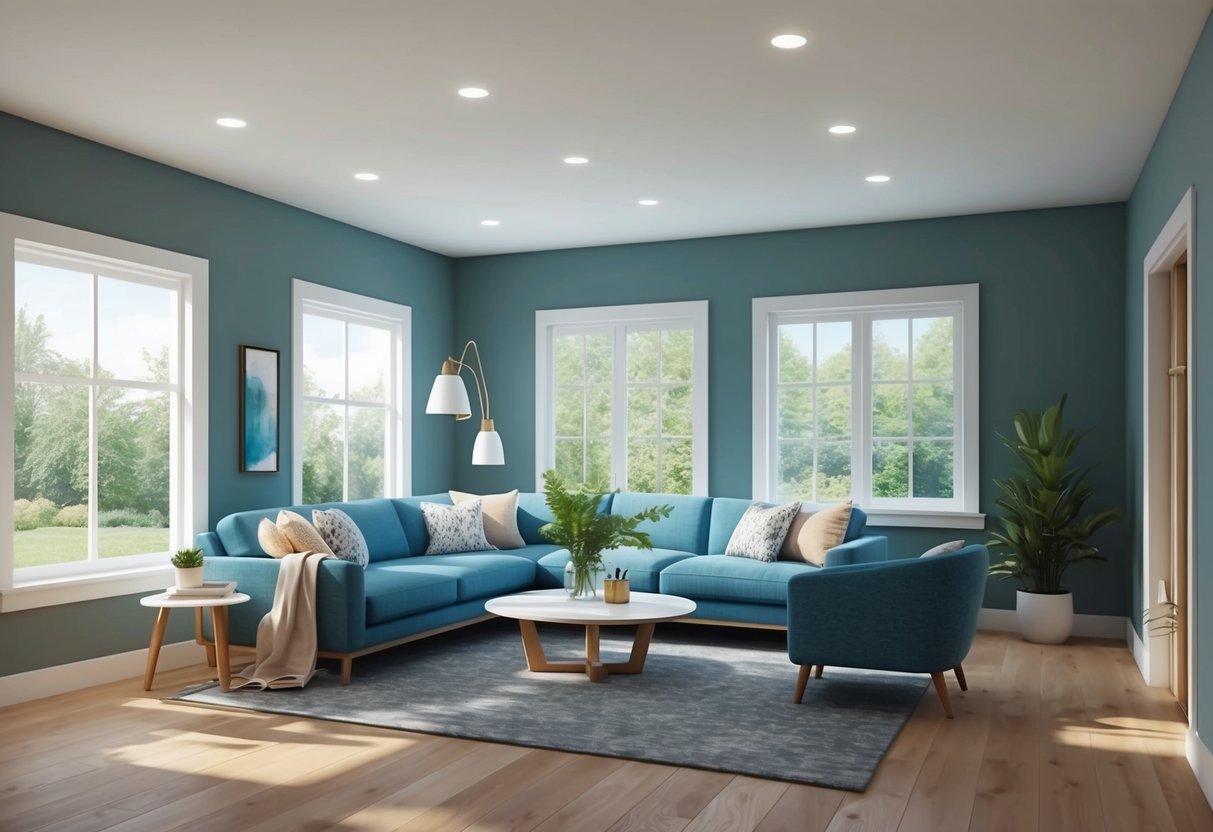
Sealing Air Leaks and Improving Airflow
Sealing air leaks and enhancing airflow are critical steps in creating an energy-efficient home. These measures can help lower energy bills, boost indoor comfort, and support healthier indoor air quality.
Identifying Common Air Leak Areas
Air leaks commonly occur around windows, doors, attic hatches, and electrical outlets. Gaps can also be found in areas where pipes or wires enter exterior walls, as well as along baseboards and unfinished spaces such as basements or crawlspaces.
Detecting these leaks often requires a careful inspection, feeling for drafts, or using tools like smoke pencils or infrared thermometers. Sealing these leaks can prevent conditioned air from escaping and outside air from entering, making HVAC systems work less and use less energy.
The U.S. Department of Energy highlights that sealing leaks can improve both comfort and efficiency, often yielding up to 10% savings on annual energy bills. Practical steps, such as checking for light around doors and windows or observing dust accumulation near gaps, can signal problem areas that need attention.
Weatherstripping and Caulking Solutions
Weatherstripping and caulking are two of the most effective and affordable methods for sealing air leaks. Weatherstripping is best for movable joints such as windows and doors, while caulking is suitable for stationary cracks and gaps.
Materials like foam tape, V-strip, and door sweeps work well for doors, while silicone or acrylic caulk can fill seams around window frames and utility entries. Proper application involves cleaning the area, measuring the gap, and choosing an appropriate weatherstripping or caulking product.
These solutions help maintain consistent airflow, reduce drafts, and support better temperature control. Homeowners often notice not only a drop in utility expenses but also a more comfortable living space after addressing these problem areas.
For more on techniques and benefits, visit this detailed guide on sealing air leaks and insulation.
Smart Heating and Cooling Strategies
Smart choices in heating and cooling can significantly reduce energy consumption and lower utility bills. Technologies such as programmable thermostats and efficient equipment upgrades help maintain comfort while minimizing waste.
Upgrading to a Programmable Thermostat
A programmable thermostat allows users to schedule temperature changes based on daily routines, optimizing energy use when no one is home or during sleep hours. By automatically adjusting heating and cooling, these devices help limit unnecessary running times and cut energy costs.
Many models are now equipped with Wi-Fi capabilities, letting homeowners monitor and modify settings remotely. Some smart thermostats use sensors and geofencing to detect occupancy and further enhance savings.
The U.S. Department of Energy estimates that using a programmable thermostat properly can save up to 10% a year on heating and cooling costs. Regularly updating the temperature schedule with the season and household habits ensures maximum efficiency.
When installed correctly and used as recommended, programmable thermostats are cost-effective upgrades that quickly pay for themselves. More guidance and tips are available on how programmable thermostats improve efficiency.
Energy-Efficient Furnaces and Heat Pumps
Upgrading an aging furnace or switching to a high-efficiency heat pump can yield noticeable reductions in energy bills and improved indoor comfort. Modern energy-efficient furnaces often feature variable-speed motors and condensing technology, both of which use less fuel and maximize heat output.
Heat pumps work by transferring heat rather than generating it from fuel, making them highly efficient in moderate climates. Energy-efficient heat pumps are now effective even in colder environments due to technological advancements.
Choosing the right-sized system for the space is crucial for both energy savings and comfort. Sealing and insulating ducts further enhances the performance of any HVAC system.
Pairing an efficient furnace or heat pump with smart controls can amplify cost savings and comfort levels. For specifics on upgrading HVAC equipment, see this ENERGY STAR guide to heating and cooling upgrades.
Adopting Energy-Efficient Appliances
Choosing the right appliances and using them efficiently can make a significant difference in lowering utility bills and increasing home comfort. Households can maximize energy savings and save money by focusing on efficiency at both the purchasing and usage stages.
Selecting ENERGY STAR® Appliances
Selecting ENERGY STAR® certified appliances is one of the most effective ways to reduce household energy consumption. These appliances meet strict efficiency guidelines set by the Environmental Protection Agency, ensuring they use less energy compared to standard models.
For example, ENERGY STAR® refrigerators, washers, and dishwashers can save hundreds of kilowatt-hours per year. Look for the ENERGY STAR® label when shopping for new kitchen and laundry appliances.
Models carrying this certification often feature advanced technologies such as better insulation, high-efficiency motors, and smart sensors. These features help minimize power use and contribute to noticeable utility bill reductions over time.
Prioritizing upgrades in high-use appliances, like the refrigerator or water heater, often yields the greatest savings. Exploring resources such as the ENERGY STAR program’s savings guides can help homeowners identify the most cost-effective options.